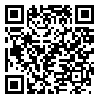BibTeX | RIS | EndNote | Medlars | ProCite | Reference Manager | RefWorks
Send citation to:
URL: http://ijhe.tums.ac.ir/article-1-147-en.html
Backgrounds and Objectives : Nitrogen compounds in wastewater are mainly in four types of organic, am- monia, nitrite and nitrate. Total nitrogen concentration in municipal wastewater is usually within 25 to 45 mg/L as nitrogen. The most important problem with nitrogen is its oxygen demand and human health effect.
Materials and Methods: Anaerobic Baffled Reactor (ABR) is a system in which baffles are used to direct wastewater flow. During 9 months study, a 15 liter modified ABR (104*30*15 cm) with eight baffled com- partments was used for nitrification-denitrification processes. In the seventh compartment, the wastewater was aerated to oxidize ammonia to nitrite and nitrate.
Results : Denitrification was done in the first four compartments with removal efficiency from 60 to 84 per- cent for nitrite and nitrate, respectively. During the shock loading study (4 times of the last influent), a sharp decrease in nitrogen removal rate was observed which was then returned to the previous efficiency after 11 days. Artificial neural network was used to evaluate and process the data in which the observed error in 10 patterns was less than 15 percent.
Conclusion : Anaerobic baffled reactor with an influent of up to 200 mg/L has capability to remove total nitrogen concentration to less than the standard level of Iranian Department of Environment of 50 mg/L as nitrate and 10 mg/L as nitrogen.
Received: 2009/09/10 | Accepted: 2009/12/8 | Published: 2013/07/6
| Rights and Permissions | |
 |
This work is licensed under a Creative Commons Attribution-NonCommercial 4.0 International License. |





